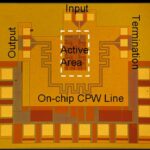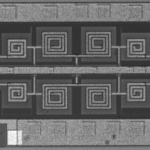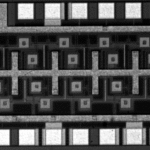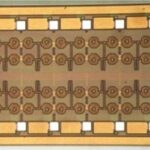High-speed and Ultra-Wideband Integrated Circuits
Digitally-Assisted Wideband Integrated Circuits
Increasing bandwidth is the most effective way to achieve higher data rate in a point-to-point link according to Shannon’s information capacity theorem. Therefore, wideband RF and microwave integrated circuits have become the key enabling technologies for a wide variety of high-speed applications, such as fiber-optic communications, radar, ultrafast instrumentation, and most recently, ultra-wideband (UWB) communications. Compared to their narrow-band counterparts, there are greater challenges in the design and implementation of wideband circuits due to their large bandwidth and stringent noise/interference constraints. Our research focuses on integrating analog and digital signal processing with RF/microwave techniques, in order to improve circuit performance and enable reconfigurable wideband circuits. For example, one of our current projects (CAEPS) is to adaptively generate ultrafast pulses with picosecond time resolution.

Distributed Waveform Generator
Application: UWB, fiber optic, ultrafast instrumentation
Innovation: time-interleaving digital pulse generators and analog pulse combining
Technology: 0.18um standard digital CMOS
Max sampling rate: 10GS/s
Number of taps: 10
Time resolution: 100-150ps
Pulse rise time: 79ps
Pulse width: 140ps-1ns FWHM
Dynamic range: 10dB
Energy efficiency: 50pJ/pulse

Distributed Amplifiers with Non-Uniform Filtering
Application: wideband communications, UWB, fiber optic
Innovation: built-in non-uniform filtering for spectrum control
Technology: 0.18um standard digital CMOS
Gain: 11.7dB
Bandwidth: 9GHz
Stop-band: -5dB/GHz roll-off

Distributed Transversal Filter for Sub-Nanosecond Pulse Synthesis
Application: wideband communications, radar, ultrafast instrumentation
Innovation: distributed circuits for picosecond time resolution
Technology: 0.18um standard digital CMOS
Pulse rise time: 80ps rise time
Pulse width: 75ps-500ps FWHM
Dynamic range: 10dB

10Gb/s Distributed Transversal Equalizer
Application: fiber-optic communications
Innovation: differential LC transmission line
Technology: 0.18um SiGe BiCMOS
BER improvement: 1e-5 down to 1e-12
Power dissipation: 30mW typical
